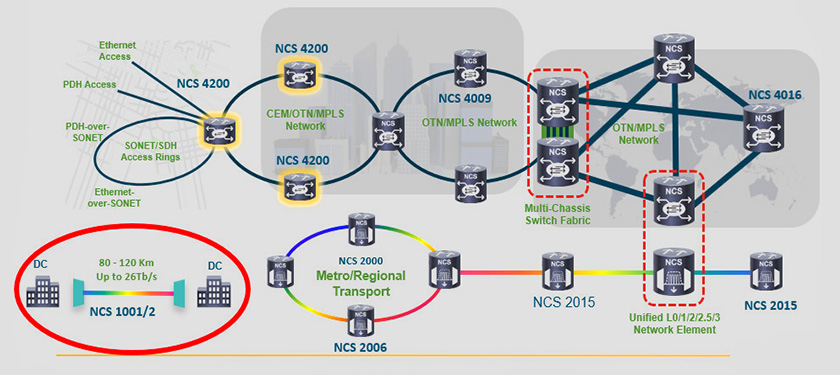
We build optical networks on the base of optical DWDM – switches that allow to do optical compression, in one fiber we create a lot at of lines of different wave lengths. Optical multiplexers allow to drive optics over long distances. 5G technology intends to use virtual base stations: a fiber or a DWDM wave length goes from data center to the aggregation node and then to the base station.
The length of wave is assigned at the aggregation center and all lengths are delivered to the data center: software
works there, not at the base station. In addition to the antenna and the radio module (vBBU), there is nothing other
there at the base station, it represents a small box where comes a cable, all the logic is in the data center. In this case
of course we need to have an advanced optical network.
Our company build full solution for 5G: we supply as well equipment and software licenses. We realize also the
combination of technologies 4G to 5G providing a soft migration.
To the optical layer we apply a network of routers via IP protocol and on the points of presence (POPs) can
stand both optical and standard routers ASR9900 series, ASR920, ASR903, NCS5500 series, NCS520, NCS540,
NCS560
To the same optical layer can be also applied the solutions of other vendors as Juniper, Huawei, Nokia,
Ericsson etc.
So we have first level – physical one – an optical network, second – an ip routed network or network of base stations and this network has a direct access to the third level – the core in the data center. Even if the fiber is the broken, the integrity of the network is safe – the wavelengths are transmitted along a different route using software (redundancy system N + 1). And there are different scales – urban or long distances – between cities. If network includes few data centers (main and reserve) happens the same: there is no dependence on physical connection. As different fibers input from different sides, in the case of a break of one optical line the wavelength is forwarded to a different route without physical intervention.
The software is also transferred between datacenters and can be sent by pressing a button: the solution is built on the Nexus 9000 series (attaches virtual software to hardware), Cisco ACI. At the data center level, we can take resources from one data center and switch to the other, the core moves from one data center to another, there may be many such nodes. In order to manipulate data between data centers, we need to implement Cisco ACI, to which are connected the servers and the Hypervisors are connected to servers, software is installed on the Hypervisors. This infrastructure provides the migration from one data center to another.
In the opposite to old technologies, 5G base stations don’t contain logic part – it is placed in datacenter and responds centrally for all based stations. To express figuratively, the base station becomes to a large degree a software. Commands are given from the central point, base station contains only optical fiber, radio module and antenna, so the size of base stations will be smaller and their density and number will be greater. This super centralized system will have easier management.
Now everything depends on datacenters. The central multiplexer and the routing core are in the datacenter, there are nodes between the routing core and virtual base stations, and switches between them to connect (Nexus). Nexus connects optics from base stations, routers, servers with installed software. If there are several data centers, we use solutions AСI (software that is launched on Nexus) providing the real backup. All resources can be transferred in real time from one data center to another. It is possible since the software is virtual and does not depend on hardware. Other advantage that the solutions don’t take huge resources.
